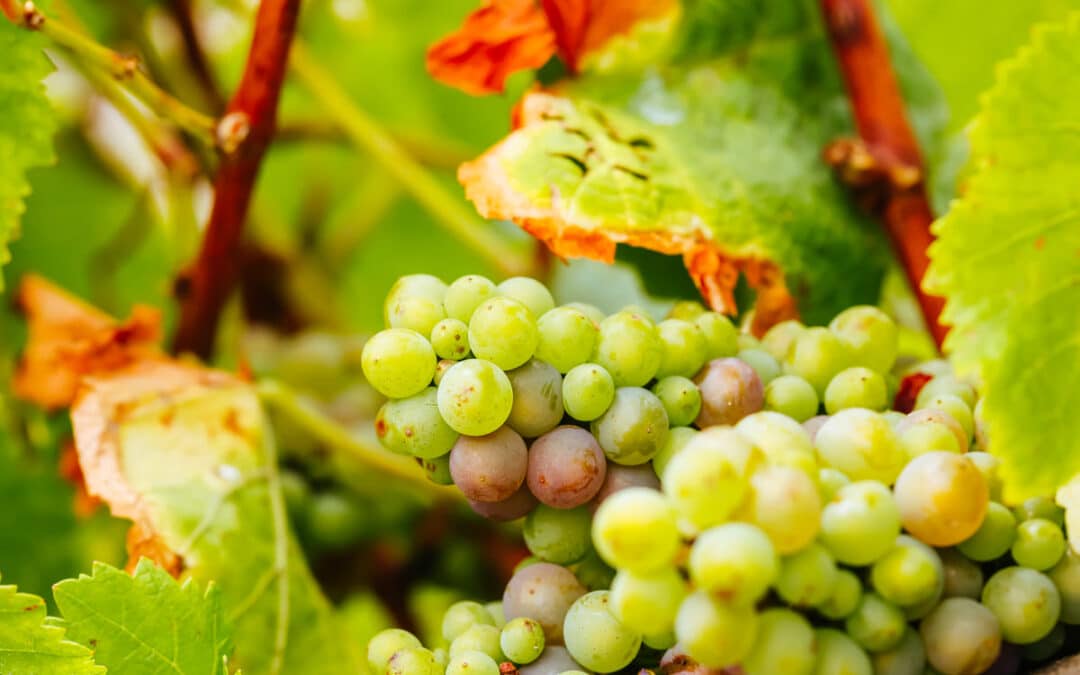The growing season here in Napa Valley is in full swing. The vines are growing vigorously, and the pale green clusters are getting bigger and bigger. Right now the vineyard work is mostly focused on suckering: getting rid of the shoots from the main vine that are growing in ways that do not benefit the yield from the plants or the future direction of the vine itself. The winemakers are looking forward to the next stage of the life of the vine: veraison.
Veraison is a stage in the growth of the crop where the grapes start to show color.
Warning: Pedantic linguistic discourse follows. If you find this sort of thing obnoxious, feel free to skip this paragraph entirely. Before we go further in discussing veraison, let us get something out of the way. How to pronounce it. The word is a borrowed word from French, where it is spelled véraison. It is NOT verasion. Nothing is being veraised. The “i” comes before the s, not after. The “s” is pronounced more like a “z” than an “s”, but never “jh”. Even people with decades in the industry make this error. Be better! Next month we might rant against the use of “varietal” as a noun. See, I told you to skip this paragraph. And now, back to our regularly scheduled programming…
You see, having its fruit eaten is part of the genetic survival strategy of the grape vine. Animals eat the grapes and then distribute the seeds in ready-to-use packets of fertilizer. Many plants rely on this strategy to spread their offspring.
However, if the seed is not fully developed, it does the plant little good to be eaten. So, as the seed draws energy from the vine in order to develop, the plant generates natural pest deterrents. The grapes are small, opaque, the same color green as the foliage, and quite acidic and astringent. This way the number of grapes sampled by pests diminishes, as the pest animals cannot see the fruit as well, and will evaluate the fruit rather poorly. The pest will try one grape at the most and will move on (nevermind the squirrels that will eat one underripe quince in my yard and then move on to try another and another and another…).
Once the seed is mature, it is a different story. The grape now wants to attract animals to the fruit. What was yesterday’s pest becomes today’s ally!
Enter veraison.
Inside the grape, the fruit starts to accumulate sugar. As sugar increases, the acidity and astringency diminish. The skin turns from opaque bright green to the lively, translucent final color (red, purple, or black for red wine grapes and golden for the white wine grapes). The fruit may now be eaten so that the seeds can be broadcast throughout the land.
This point is when the winemaker must start monitoring the fruit. From veraison on, the winemaker will sample the vineyards, tasting and testing, trying to determine the ideal harvest date. If a growing season were a baseball diamond, veraison is second base. The grape is not quite over the plate, but it is in scoring position. As the sugar accumulates, the winemaker gets a better and better idea of when to order the harvest of the grapes.
Obviously, we need sugar in the grapes. Sugar is the food for the yeast that will be converted by the yeast into ethanol. However, we must also monitor the acid levels and taste for the tannins. Each of these compounds plays a critical role in the quality of the wine. Tannins give structure and body to reds. Acidity keeps the reds vibrant and lively, even after years in the bottle. Picking at just the right time when the acidity, tannins and sugar are at the perfect level ensures the best quality wine we can produce. And the chase for this perfect moment begins at veraison.
The next time you are in the Napa Valley visiting us at our Yountville tasting room or at our winery, take a look as you pass through the vineyards. You should start seeing the color change in the grapes as veraison starts taking place. Know that the clock is now ticking, and the chase to perfection is just beginning. In only a couple of months comes harvest, when the (literal) fruit of our labors comes into the winery.
Just don’t call it “verasion”.

